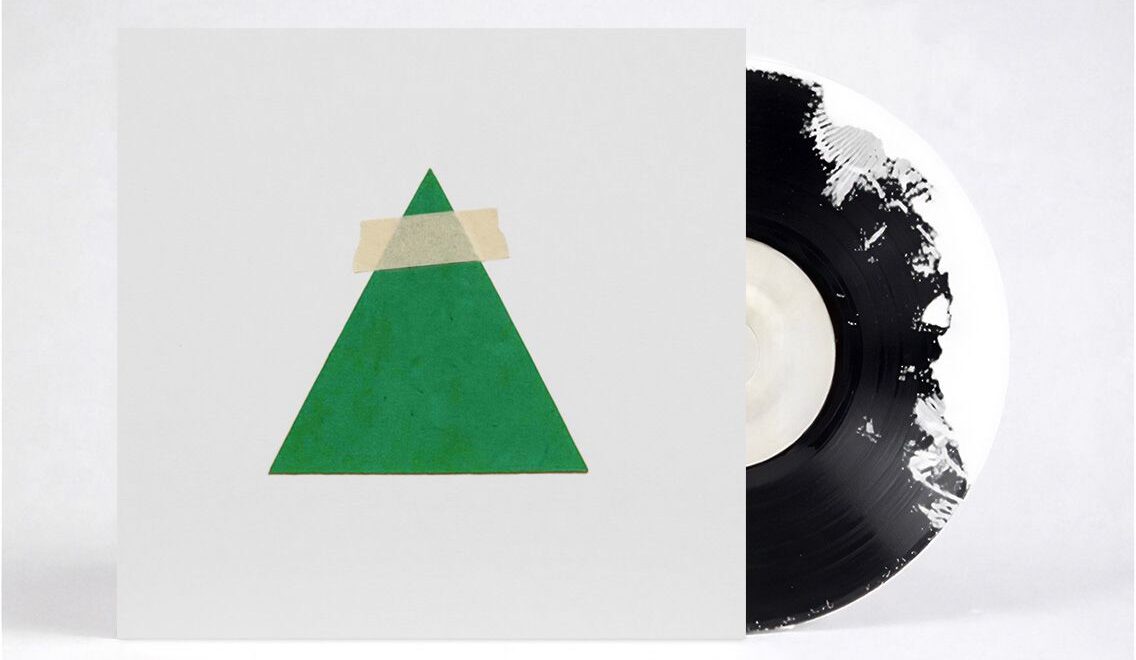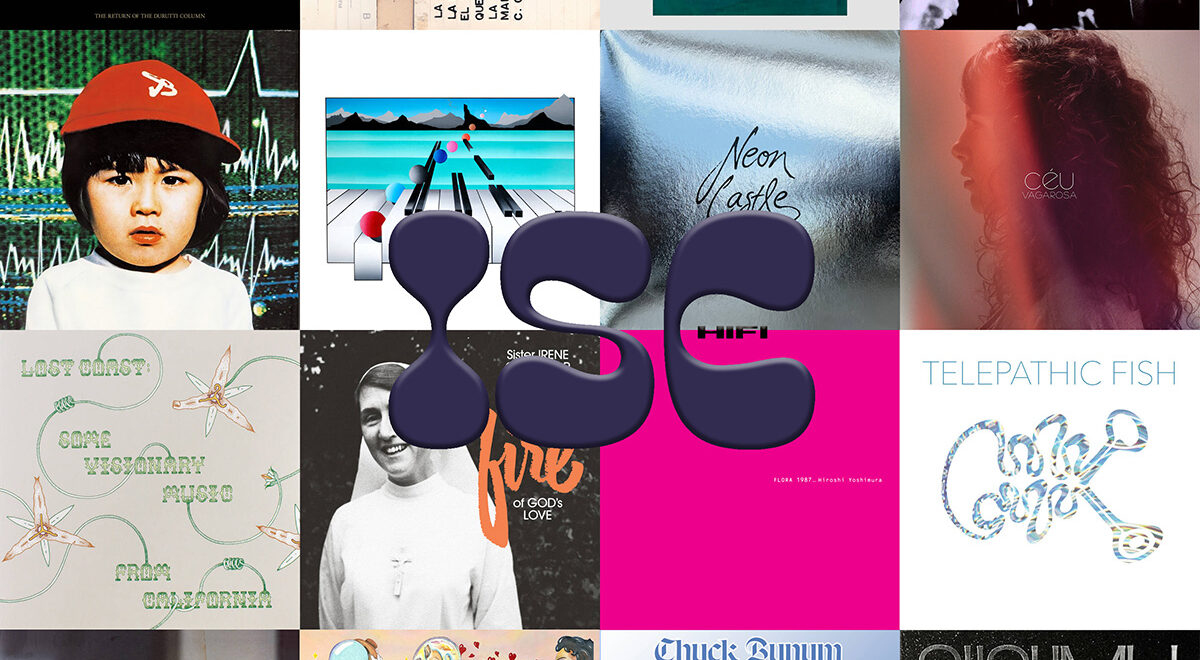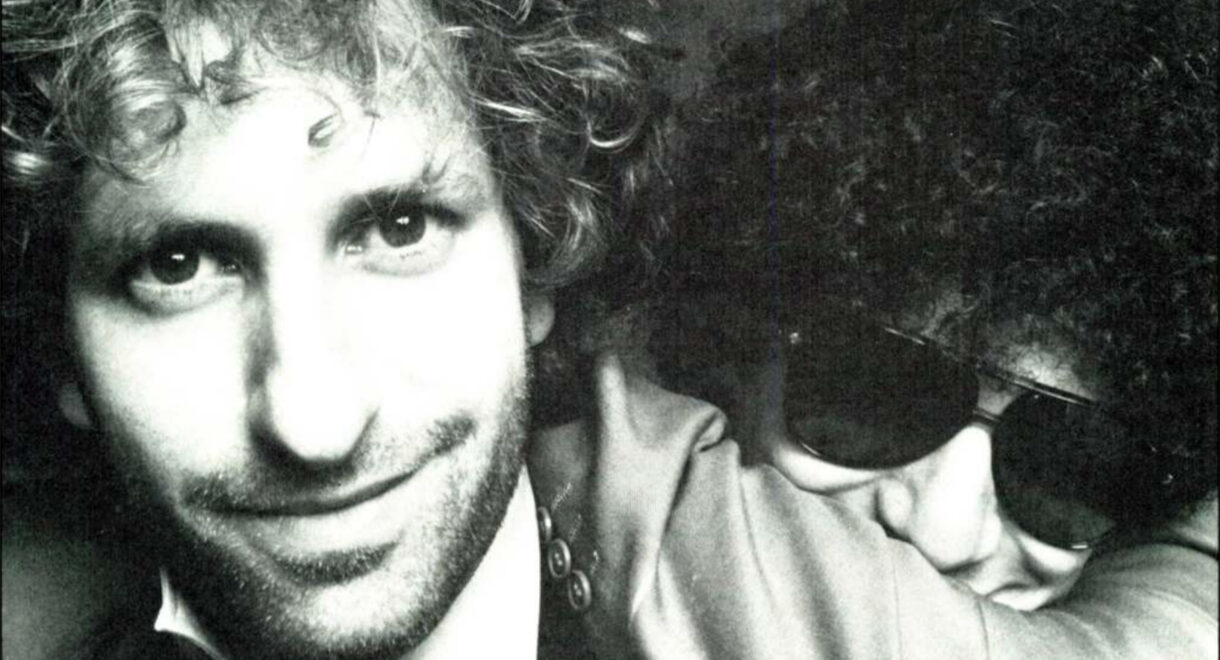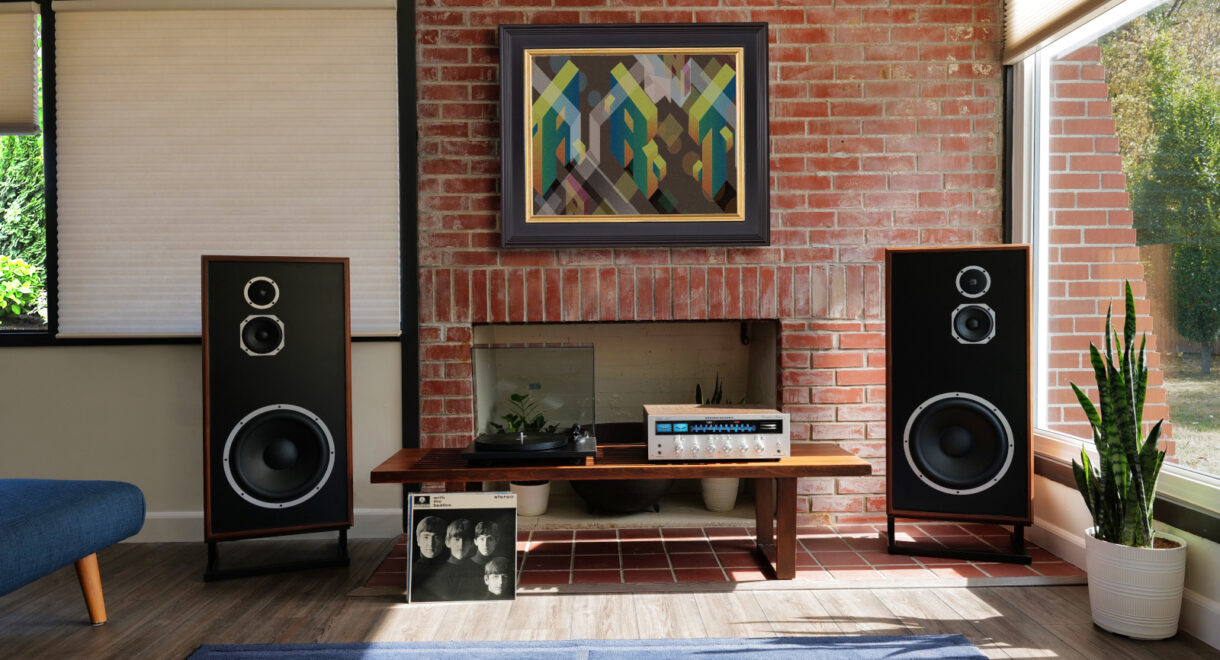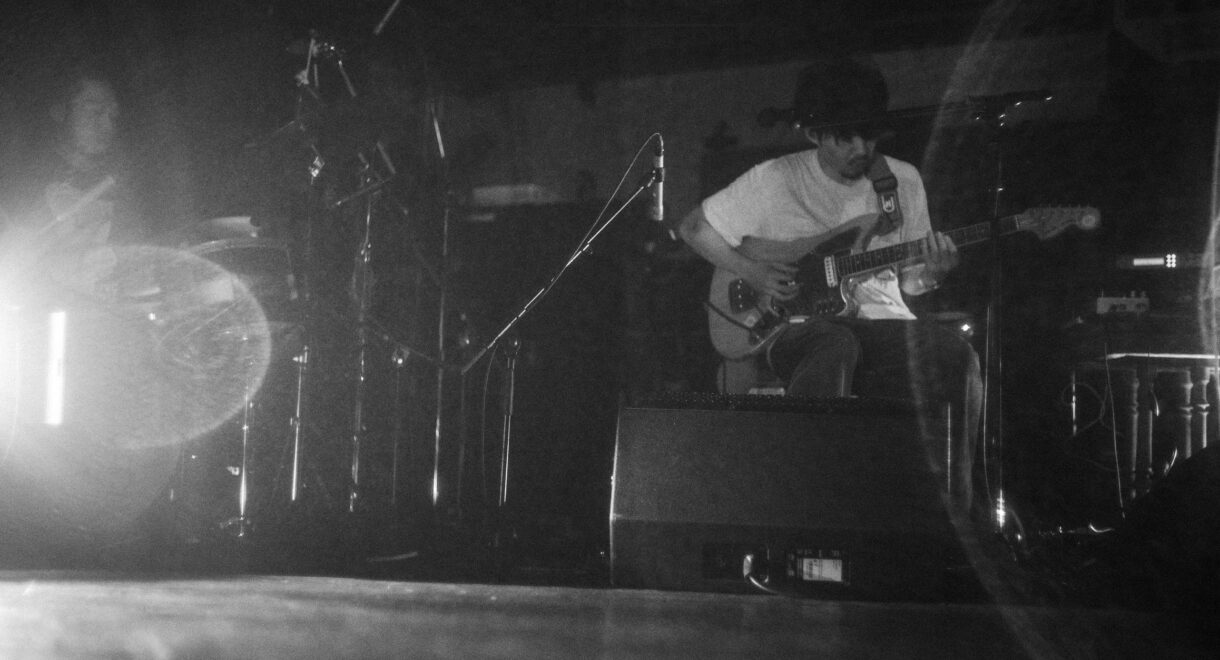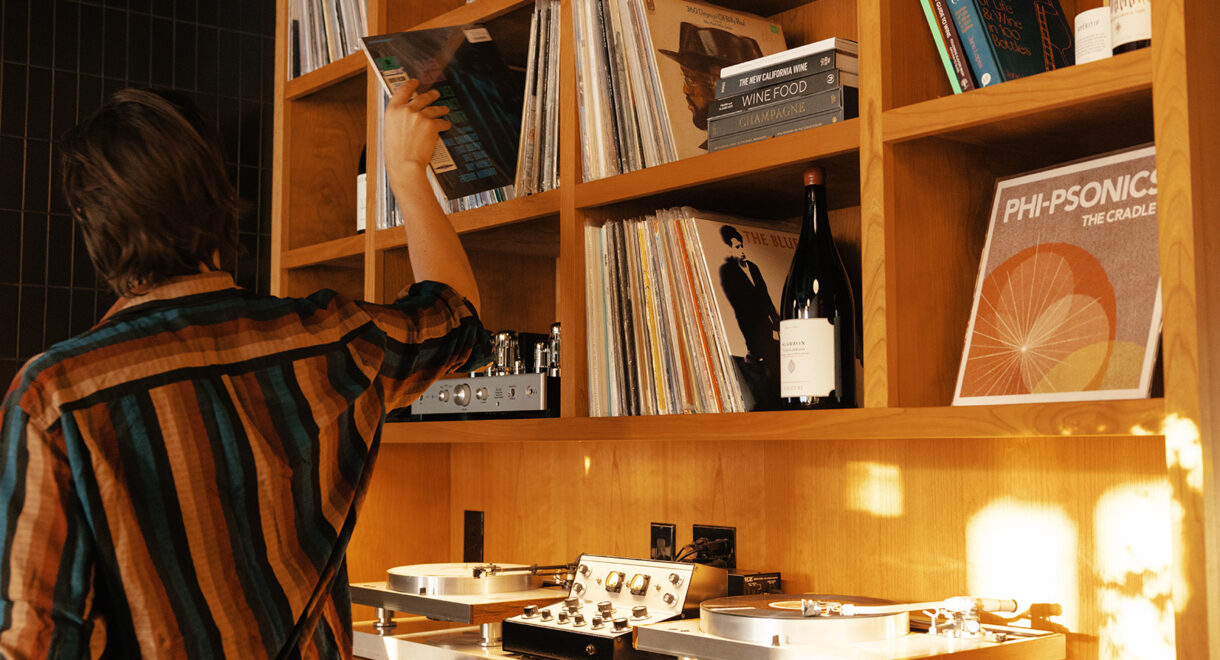Merry cosxmes to all those who celebrate! It’s that time of year again… That’s right — another cosxmes mix has been uploaded! In certain circles, “cosxmes” is the […]
Japanese Music Coffee Houses: The Rise and Fall of Japan’s Penny Universities

Read an archival article featured in the 1985 “Kissaten Culture” edition of Kaleidoscope Kyoto, a monthly English journal on Kyoto.
The average Japanese coffee house (*kissaten) meets a variety of needs simply not met by the average Japanese home. They are cool in summer, warm in winter, furnished with comfortable chairs to lounge in, tables to write on and lights to read by. Since it is not common practice to meet or entertain in one’s home, Japanese coffee houses serve as public meeting places for friends, lovers and business acquaintances, or simply as a place to relax in the middle of a grueling shopping day.
The music coffee houses of Japan, however, are more than that; they are especially for music lovers.
My first introduction to the truly unique nature of music kissaten came one winter when the university student in the next room knocked on my lodging-house door. The conversation went something like this:
“Jazz, you like?” — “Jazz, I like.”
“Osaka, you know?” — “Osaka, I know.”
“Kissu Jaretto, you like?” — “Huh?” “” (He ran to get the album cover) — “Ah, Keith Jarrett! I like.”
I finally got the gist of my neighbor’s intent, which was to inform me of a special tape-concert in an Osaka coffee house. Entering the pitch-black kissaten, where numerous cigarettes were glowing in the dark, I was overcome with the feeling that those people were committed to something. About 20 of us stayed up all night to hear the master tapes of the soon-to-be-released 10 record set of Keith Jarrett’s five city, Japanese solo concert tour.
In the early seventies, kissaten were a student’s salvation. When your room was only four and a half mats wide, after putting in a refrigerator, bookshelf, plastic closet and kotatsu, you were left with almost no room. Walls were paper-thin and your neighbor complained once again because you had your headphones turned up too loud. Kyoto, being famous for its hot, humid summers and cold, wet winters didn’t help matters much. Almost anywhere was better than your lodging house. And so it was that kissaten grew at a rate that seemed to know no limits.

SANTA CLAUS, being a jazz kissaten near Kyoto University as well as a bearer of gifts, provided an alternative to the above dismal situation. Established 12 years ago, its high ceiling and spacious walls allowed space for jazz to resound and art to be exhibited. Every April brought an influx of new students to Kyoto’s universities, and upperclassmen saw it as their duty to introduce freshmen to such a unique environment. In time SANTA CLAUS put on a new set of clothes and for a 280 cup of coffee you could enjoy comfortable, red velvet chairs, heating/air conditioning to save you from the “wrong” temperature outside, subdued lighting to complement the cool blue sounds of Gary Burton, mammoth speakers to help you feel each note, and live performances to show you how it’s really done.
Had you desired only acoustic jazz, there was PHOONJALAM. While the name meant “noisy” in a northern Japanese dialect, you got the feeling you were sitting in a really classy place with its dark brown walls and colonial furniture. Like many kissatens, the record jacket of the album being played was spotlit on the wall for all to see. It must be pointed out that one of the very special features of music kissaten is that they play complete album sides without commercial interruption. What put PHOONJALAM far above the others was its collection of over 5,000 albums, all acoustic jazz. Among the collection were 116 Duke Ellington albums alone. Most students would have trouble just fitting the records into their rooms. PHOONJALAM stayed open from 1974 to 1983 and closed its doors mainly as a result of a lack of customers. This was possibly due to an art college moving to another part town.

Lest you think that “kissaten” is synonymous with “jazz” you should know that Japanese coffee houses come in many flavors.
For wilder jazz, there was always JAZZ SPOT ZABO. Set in a narrow L-shaped basement, the black, earthy walls with African masks staring you down lent a most primitive, cave-like feeling to that unique spot. The Art Ensemble of Chicago, McCoy Tyner and John Coltrane were on the mellow end of a spectrum where sounds were bent all out of shape by wailing saxophones and blaring trumpets… It was not a place to discuss politics or religion or anything else. It was a place to really listen to, and really feel, the music.
Closing in 1983, JAZZ SPOT ZABO soon reopened as people have whatever they desire. Based on a daily rental fee, the FREE SPACE ZABO, reflecting a general trend toward letting space could be rented for movie showings, art exhibits and performance art. Yet this too, is in the past tense. What came next? RENTAL VIDEO ZABO.
Lest you think that “kissaten” is synonymous with “jazz” you should know that Japanese coffee houses come in many flavors. Jazz did dominate the scene for many years, offering freedom of expression that provided contrast to an otherwise extremely structured society. MUI, situated at the end of a long hallway over which a sign announced its particular genre of music, “Flok and Blues,” really made me feel at home. It was small and stuffy, with posters taped on yellowing walls announcing local concerts, and stacks of manga on the floor. But it was the music that got me: over 2,000 albums of some of the best unknown music there is, including Dan Hicks and His Hot Licks, Hirth Martinez and even “Zap Comix” creator R. Crumb’s 78 r.p.m. banjo records. I’m still at a loss as to how they ever compiled such a motley assortment of records. Concerts were held once a week at which performers played a variety of “Flok” and jug-band music.
MUI was situated on the first floor of a Japanese inn in central Kyoto, where literally thousands of junior high and high school students come on their excursion trips from all corners of Japan. Apparently, more than a few found their way to the “iniquitous” MUI, causing school officials to complain to the inn. The inn, trying to get rid of MUI for years, finally succeeded in 1983, putting an end to its 10 year life. The owner took up studying the tea ceremony, and sold MUI, records and all, to another man who moved it close to Kyoto University. The new location brought a vast number of students who came for coffee and curry rice and weren’t all that interested in listening to MUI’s rare collection of music. The second MUI also closed its doors one year ago leaving the corner looking like Christo had come to “wrap” a new project. While it was feared that yet another McDonald’s had taken over another intersection in Japan, the unveiling revealed a new eating establishment; one that serves traditional Japanese food.

MISS JERRY ROW was another kissaten that made me feel right at home, this time because of the warmth and character of the owner, Sakamoto Jun, an excellent singer/songwriter. We swapped songs on guitar and goofed around on his skateboard in front of the shop. MISS JERRY ROW played records by American male vocalists: J.J. Cale, Jimmy Buffet and Jackson Browne. Seasonal sports excursions were organized for the regulars (and anyone could be one), surfing in the summer and skiing in the winter. The feeling there was light, happy and healthy.
This shop died three years ago at the age of six. Sakamoto Jun continues his role of manager at the SECOND HOUSE on the corner of Sanjo Kawaramachi. He states that the biggest difference between these shops was that the former was a personal hobby, the latter is a company business.
Stranger shops there have been. PUMPKINS simply refused to be pigeon holed. With a simple counter made of varnished logs, you expected to hear some country and western music at least, but like many surprises in Japan, “What you see is not what you get.” Their record collection ranged from 5,000 to 8,000 albums everything from rhythm & blues, old jazz, Liverpool, salsa, reggae and new wave. PUMPKINS was actually the home and hangout of the “NO COMMENTS,” a local Kyoto band fronted by an 18 year old woman who wore a blond wig and rabbit pelts, played sax, and warbled like a bird. When asked “What do you like about your shop?” the owner replied, “We play music which will be popular in the future.”
The NO COMMENTS splintered into a new group, the NON CATERIONS (No Categories), and both bands sporadically put on sporadic concerts, leaving their hangout to the bugs that be. They sometimes could be heard at TAKU TAKU and JUTOKU, two well-known nightspots in restored Japanese warehouses, but they probably fit in even better with the decor of the lesser known CIRCUS CIRCUS. One friend described it as “New-wave mouth motif.” Looking at center stage, you had the feeling you were peering down a throat, surrounded as it was by red carpeting with customers grouped in separate off-white booths shaped like molars, one on top of the other. Every night the mouth was pulsing with the live music of such groups as, “Fuck Beat” vs “Masturbation” vs “Acid Queen.” “Versus” was an appropriate term for the battle that took place within. CIRCUS CIRCUS was the epitome of Japanese youth letting it all hang out.
The dentist came in and gave it a new set of dentures though, and now it is just another café-bar featuring popular movies on a huge video screen and a variety of fruit-flavored chu-hi’s (a weak alcoholic drink).
If you know the album cover of King Crimson’s first record, you will know why I entered NIKO NIKO-TEI. Their 10 foot reproduction of the album’s red & blue grotesque face looked down from their third story window and drew me in like a magnet. It was the loudest kissaten in Kyoto, playing such groups as Black Sabbath, Deep Purple and Blue Cheer, with the volume turned up to 12 (on a scale of 10). This permitted absolutely no conversation, customers either stared into space or buried their noses in their manga. Like other shops, they had used records for sale, partly to be able to afford the 10 to 20 new albums they purchased monthly.
The loudest kissaten in Kyoto has become one of the quietest, in the form of a manga kissaten. For 350 yen, you can spend all day sitting at a kotatsu reading any one of the 7,000 comic books they have on hand, coffee included. “If a thick Japanese comic book fell down in a loud Rock & Roll kissaten, would it make a sound?”
In the western part of Kyoto there was a bright red awning with “SHAMBALA” on it. Operated as a typical “snack” from 1975-77, the owner, Ogihara Midori, was ripe for some changes. After attending a class in “Women’s Consciousness-Raising” at Kyoto Seika College, she turned her snack into a collectively-run kissaten for women. “Shambala Sisters”, as the group was called, did all the remodeling themselves, providing a place for discus- sions concerning women’s issues. A sign on the front door warned that men unescorted by women would be turned away. SHAMBALA must have been a breath of fresh air for those lucky enough to have known about it. SHAMBALA closed in 1982, and Ogihara Midori began to learn carpentry, later going to America to improve her skills.
At the end of a narrow, brightly lit alley filled with porno theaters and yakuza underlings, there was a small door with a rounded top that forced you to bow as you entered. First you took your shoes off, then you would either take two steps down into a 3 x 6 foot den, or climb the ladder to the 9 x 12 foot second floor. Whether the first floor or the second, you could not stand up straight.

Equally unique was the music they played, which could be Angeles Free Music Society and the Portsmouth Symphonia. Cage, Brian Eno, the Dead Kennedys, Philip Glass…
There were no chairs in the DRUGSTORE, so you either sat or reclined on the purple shag carpeting that not only climbed the stairs, but crept up the walls and covered the ceilings as well. into the floor, under which were mounted lights. The Japanese There weren’t any tables either, only small discs of glass recessed into the floor. The Japanese would say: isseki, nichô – one stone, two birds.
Equally unique was the music they played, which could be Angeles Free Music Society and the Portsmouth Symphonia. Cage, Brian Eno, the Dead Kennedys, Philip Glass, the Los considered new-wave, psychedelic, progressive and free: John Imagine, if you can, over twenty bodies squeezed together for one of their nude poetry readings or avant-garde film showings.
This non-profit kissaten was also collectively run by a group of for the cost of ingredients alone, and it was OK to bring in your own food. The catch? A poster explaining their income and outgo showed that it was necessary to have a donation of at least ¥250 in order to cover their basic utilities. This system was set up because they had never gone to the trouble of getting a business license. Good for them.
The theme of the DRUGSTORE could be summed up in one statement which graced their toilet patchwork psychedelia: “WE DON’T TAKE DRUG – WE ARE DRUG.” The DRUGSTORE stopped operating in 1981 due to a lack of volunteers. Volunteers received the “real” minimum wage, nothing, and the amount of people interested in their menu of bizarre activities decreased, causing their debts to increase. The closest thing to their avant-garde activities now is Kyoto’s Seibu Kodo, a dilapidated structure near Hyakumanben totally operated by Kyoto University students.
You may have noticed that the preceding review of the Kyoto kissaten is in the past tense. This is because, sad but true, they too, are in the past. Most of them existed during a ten-year period from the early seventies to the early eighties, but now every shop is either gone or changed beyond recognition. They could be considered “the second wave” of Kyoto’s music kissaten.
The “first wave” began in the mid-sixties, and coincided with the unrest shared by youth around the world at that time. Intellects were fueled by such books as Robert Heinlein’s Stranger in a Strange Land and Lester Brown’s The Green Revolution, which every student who was “with it” seemed to be reading. Students of Doshisha and Kyoto Universities were angry, and various forms of protest were directed toward the conservative Japanese government and the war in Vietnam. They frequented shops like FOON, which stayed open all night and served natural foods, ART VILLAGE, which provided space for the exchange of art and intellect, and a rock & blues kissaten called DAMN HOUSE, which was a hangout for many who eventually opened their own kissaten.
Kissaten owners became so for their love of music and their need to avoid being sucked up by the “establishment”, which in Japan was symbolized by the dark-suited sarariman. One alternative path open to those who were willing to take it was the establishment of a coffee house. At that time buildings were affordable and friends lent a helping hand in the design and construction. True to the times, individual personalities could be manifested, each kissatten being an extension of the soul of each owner.
So what has happened? My list of favorite kissaten contained 80 Kyoto shops that I considered truly unique in music and in atmosphere. Today most of them are gone. “Change, that’s what it’s all about,” says Sakamoto Jun, previous owner of MISS JERRY ROW. “These days students live in comfortable manshon. They have air-conditioning, sophisticated stereo systems, and state-of-the-art coffee makers. They can run down to the local 24 hour convenience store for snacks or go for a drive in their slick cars. They can afford anything they want.”

The owner of SANTA CLAUS gives the following reasons for the waning of music kissaten culture: “Outside pressure from city officials to continually upgrade one’s shop. When we began we were hassled by the fire department for having a wooden floor. And now carpeting is illegal. Inside pressure from oneself. We entered this business because we loved music as a hobby. You have no idea what it feels like to listen to jazz, non-stop, day in, day out. I can’t stand it anymore. Economic pressure from inflation. It’s almost impossible now to make a profit serving just coffee and other drinks. You need a new gimmick.”
When most of these kissaten began, the owners were in their mid-twenties, carefree and not in it for the money. Ten years down the road, many are married, raising children, and trying to cope with other financial responsibilities by peddling ¥280 cups of coffee. Some were lucky enough to weather the times, or had enough of a die-hard following to survive. Others rode the crest of their success without realizing it was a wave, and before they knew it, they crashed.
Shops have become cleaner and brighter, food is almost always served, and video equipment has often been installed. This has meant a new development in kissaten culture – company owned café-bars which reflect the theme of the eighties: happy, happy, happy. Still this may not be enough. The desires of the youth of Japan are difficult to satisfy. The next wave has come in the form of multi-floored businesses containing a variety of themes, from café-bar to free space to traditional Japanese cuisine in a hi-tech setting.

One such multi-faceted entertainment center was opened two years ago by none other than JUNSEI, a Japanese restaurant chain with a 153 year history. An even richer complex has been built in northern Kyoto by the Nissan Corporation, calling itself, “MULTI-PLEX JAPAN – a community space for your free expression.” It includes a gallery, shops, a variety of restaurants, a cinema and even our old friend, the kissaten.
Eight years ago, visiting numerous coffee houses and enlisting the help of Japanese friends as interpreters, I was often met with the response: “Why do you want to write about kissaten? They just come and go anyway.”
Probably one of my attractions is just that: that they do come and go. For in the kissaten that are new we can see the ever- changing adaptability of the Japanese. And in the older kissaten that refuse to die, we can recognize a strength supported by an owner’s single-minded devotion to “what is right.”
Ed. Shorer is a retired LAUSD teacher who lived in Japan from 1978 to 1986. With a BA in Japanese and English Intercultural Studies, and an MA in Popular Culture Studies, he found himself hanging out in various ongaku kissaten (music coffeehouses) and writing about them for an English language publication. He went on to open iBrowse COFFEE in Alhambra, an Internet cafe with live music in the mid-‘90s. Now he spends his time competitively racing slot cars (he’s the author of “Slot Car Racing in Popular Culture”) and driving his classic cars to different cars and coffee meets. He still loves good coffee and music.
Visit Ed Shorer’s website: https://shorer.com/
Complete scans of the article are available on Google Drive.




